Preserving And Conserving A 200 Yrs Ancient Pond As Part Of A Heritage Site
Click to Enlarge !
- The Issue
- Older Issues
- Damages 1
- Damages 2
- Pollution
- The Provocation
- The Present Status
A Struggle Against Narrow-Minded Selfishness by a Neighbour
and The Indifference by the Authorities
The Indian Constitution mandates in Article 51A 'to value and preserve heritage ... protect and improve the natural environment ...' .
This web page illustrates the difficulties of efforts to apply the wisdom and aspirations of the Indian Cnstitution and preserve an about 200 years old ancient pond (in local language 'tank').
The difficulties have turned into a struggle against pollution of water for drinking and bathing and a threat to the laterite foundation of the traditional pool because of wilful omissions and harmful actions of a neighbour.
Since 2004 the issue has been brought to the attention of the political and legal authorities.
It is painful to note that damage to life and property has already happened and foreseeable damage is bound to happen while efforts are made to cater to selfish interests rather than to solve the issue on ta basis of an unbiased assessment in a time-bound manner that also recognises the seriousness and the urgency of the issue.
The ISSUE:
A beautiful traditional pond with a bathhouse, those fast disappearing jewels of Kerala's built heritage
-- and a neighbour whose property lays around the western, northern and eastern side of the pond and who does not adhere to good neighbourliness, obstructing with all means the efforts to preserve the it.
The Pond And The Bathhouse Restored To Its Original Beauty Between 1995 And 2007
Sample Of Protecting Measures
Aside from surrounding the pond with a brick wall and renovating the bathhouse, efforts have been made to stop the dilapidation of the laterite pool foundation because of the rooting of trees. This was done by fixing Bangalore granite on the inside of the pool wall
You can't be on good terms with a bad neighbour, however hard you try.
Example 1: Obstructing the building of a compound wall
A remaining stretch of 22.9 meters compound wall could not be built for 10 years because the encroaching bamboo from the neighbour's property was not cut.
The issue was finally solved in 2005 with the mediation of the then Circle Inspector, but under blackmailing conditions:
- Without justification I had to pay the cutting charges for the bamboo.
- Without justification my neighbour claimed 2 trucks of granite, having been used on my side to stabilise a mud wall separation between the two properties (see last photo next row).
- The neighbour claimed further without justification another boarder line in his favour (the property sketch issued by the village officer clearly marked the border!).
Comment of the then Circle Inspector: "Be happy that you can build the wall."
Example 2: Blocking the flow of a century old drainage ditch
A drainage ditch running openly through my and my neighbour's property to bring excess water during monsoon to the adjacent paddy field was filled up in 2006/2007 on my neighbour's side.
This was done without considering the negative impact on the recharge of the ground water level and also the negative impact on my property that became flooded the same year -- destroying all new plantations. Only after the monsoon of that year we were able to built a new water channel for excess water during monsoon. [see sketch]
Damages As A Result Of Negligence By A Neighbour
A First Threat To Life and Security Becomes True in 2004
On Thursday, June 17th 2004, a teak wood tree from my neighbours property (sketch, A3) fell onto the roof of the bathhouse causing considerable damage.
Already in 1995 the then village officer had given the clear instruction to my neighbour that this teak wood tree had to be cut.
The incident happened briefly after we had completed the renovation of the bath house. Repeated reminders that this teak wood was also sick, so that the threat was imminent and foreseeable were ignored.
Another Foreseeable Threat to Life and Security Becomes True In 2010 During The Proceedings Before The RDO
After several futile attempts attempts over the years to approach my neighbour through well wishing friends, I finally filed a complaint before the Revenue Divisional Officer Thrissur in January 2008, starting thus a journey that saw 6 RDO's coming and going and has been characterized by repeated adjournments of hearings for different reasons.
On Friday, April 9th, 2010 a branch of Mango tree fell onto the roof of the bath house on the eastern side, causing again considerably damage. This threat was also foreseen and has been repeatedly mentioned during the proceedings.
A Third Threat Is Looming ...
While there is an immanent thread to life and security from the remaining portion of the mango tree on the south-eastern side of the pool, there is a further thread from an old mango tree on the south-western side of the bathhouse (sketch A7).
Damages As A Result Of Harmful Actions By A Neighbour
The Drainage Of Excess Water During Monsoon Becomes Blocked.
Having reached a certain water level, a centuries old laterite drainage pipe, closely connected to the northern part of the laterite foundation, prevents the further rising of the water level and diverts the water into the adjacent paddy field.
After starting the proceedings, this drainage pipe with a length of about 10 meters, laying about three feet underground of my neighbours property, has been blocked. As a result the inner veranda of the bath house facing the pool has become repeatedly flooded during monsoon 2009, 2010 and 2011.
The below Images document the situation of a rising water level during monsoon 2009 with the inner veranda of the bath house becoming flooded.
Pollutants
The water of the pond becomes contaminated by leaves, fruits and seeds of trees planted around it (teak, cashew, areca nut, mango).
The laterite foundation is under threat of destabilisation caused by the rooting of about 20 teak-wood trees that have been newly and exclusively planted around the pond after the starting of proceedings.
Sources And Causes Of Pollution
At the beginning of the proceedings there had been the remaining portion of an old but sick teak-wood tree on the south-western side of the pond (sketch A1), a very old cashew nut tree on the north-western side of the pool (sketch A2) and a mango tree on the south-eastern side on the pool (sketch A3), all standing in the property belonging to my neighbour.
Also a few months before the starting of the proceedings, my neighbour planted a half dozen areca nut trees on the southern side of the pond (sketch A4).
The fruits, leaved and seeds of these trees have been the main pollutants.
After the beginning of the proceedings in January 2008, my neighbour planted systematically and exclusively around the pond about 30 new teak wood trees (sketch A5). The impact of these planting has been a manifold increase of the pollution.
Adding Fuel To The Fire
Scenic view with bitter taste.
New Teak Wood Planting Around The Whole Pond After The Proceedings Started In 2008.
The planting was done a few months after the starting of proceedings in January 2008
A view into the eastern part of my neighbours neighbours property proofs the exclusive planting alongside the pond..
A view starting from the western side, comprising the northern side and ending with a view of the eastern side.
Stocktaking & COMMENT
- January 1st, 2008, My Petition before the Revenue Divisional Officer, Thrissur
- March 8th, 2010, Conditional Order under the provisions of 133 CrPC, Sub-divisional Magistrate Thrissur:
"I, ... under the provisions of 133 of CrPC do hereby direct and require the counter petitioner to cut and remove the trees which are standing near to the pond and causing a nuisance to the petitioner and also reopen and restore the water chal in its original position or if he objects to do so, to appear before me ... and to show cause why the order should not be 3nforced and made absolute".
- May 18th, 2010, High Court ORDER:
" ... directing the second respondent [Sub Divisional Magistrate, Thrissur] to expedite the proceedings pending before him as M.C. No. 53/10 and pass final orders in accordance with law after giving an opportunity of being heard to both sides by either making the conditional order absolute or by dropping the proceedings in case he is satisfied that the trees do not cause any danger as alleged."
- March 9th, 2012, Order U/S 138 CrPC (DISMISSAL):
"Sec. 133 of CrPC will attract, if any tree, fruits of the tree, leaves of tree or branches of the tree are in such a condition that it is likely to fall and thereby cause injury to persons living or carrying business in the neighbourhood or passing by.
In the case no such apprehension is alleged and proud. Under these circumstances further action in this case is dropped."
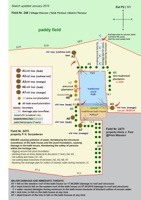
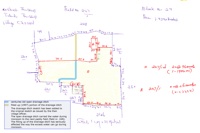

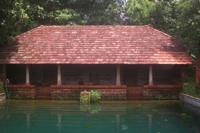
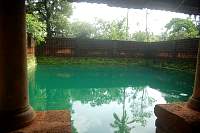
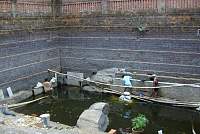
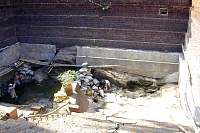
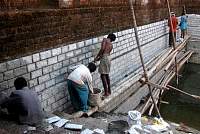
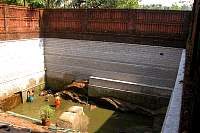
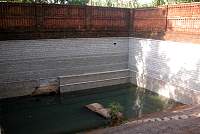
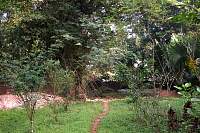
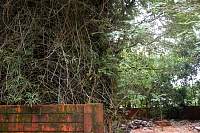
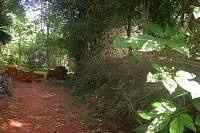
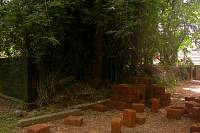
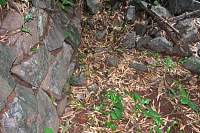
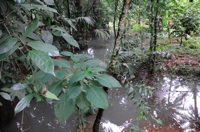
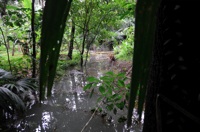
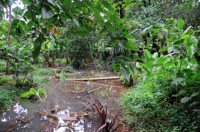
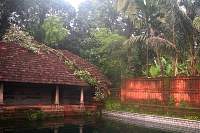

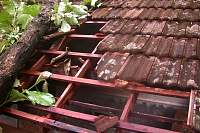
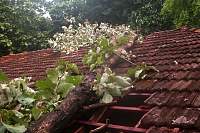
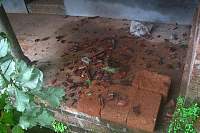
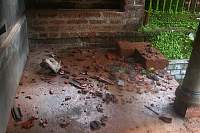
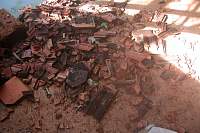
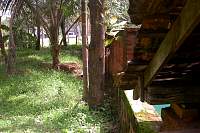

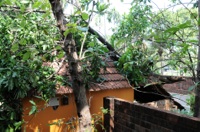
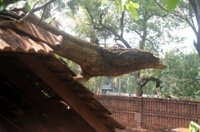


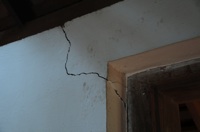
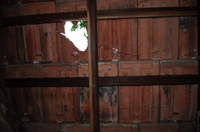
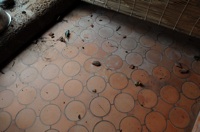
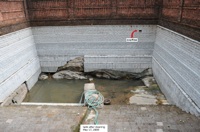
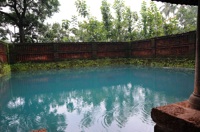
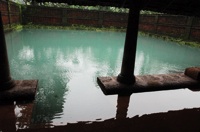
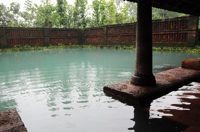
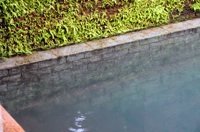
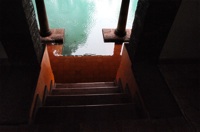
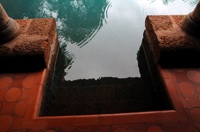
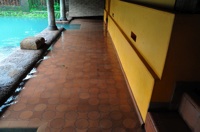


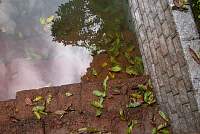
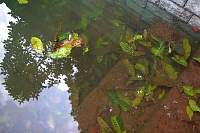
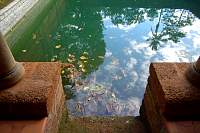
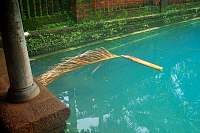
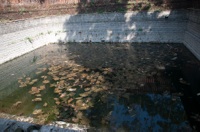
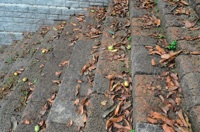
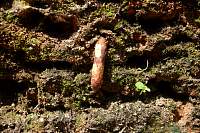
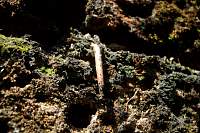
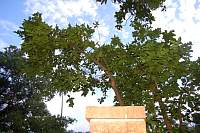
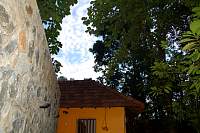

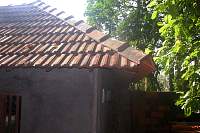
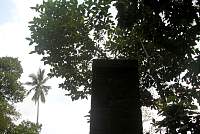
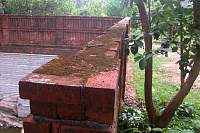

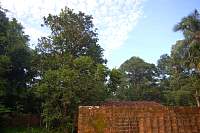

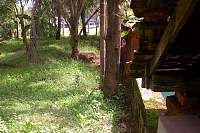
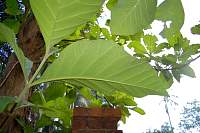
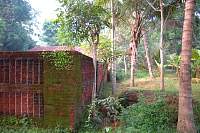
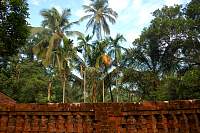
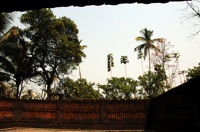
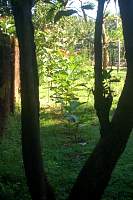


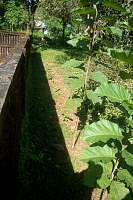
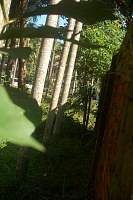
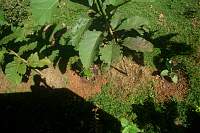
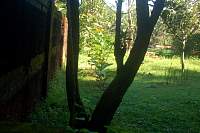
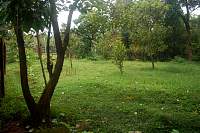
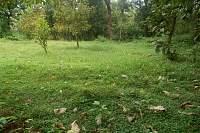
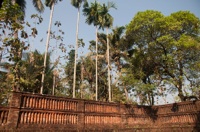
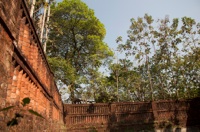
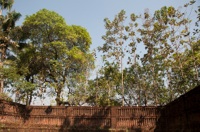
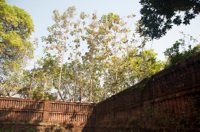
Finally and after the Chief Town Planner Country had assessed the situation and recommended to do so, I filed a petition before the RDO to stop the nuisance.
Every years causes further damage.
About 30 full-grown teak-wood trees shed constantly seeds and large leaves mesuring about 1 foot into the pool.
NEWS November 2015: Drainage Chal Successfully Unblocked